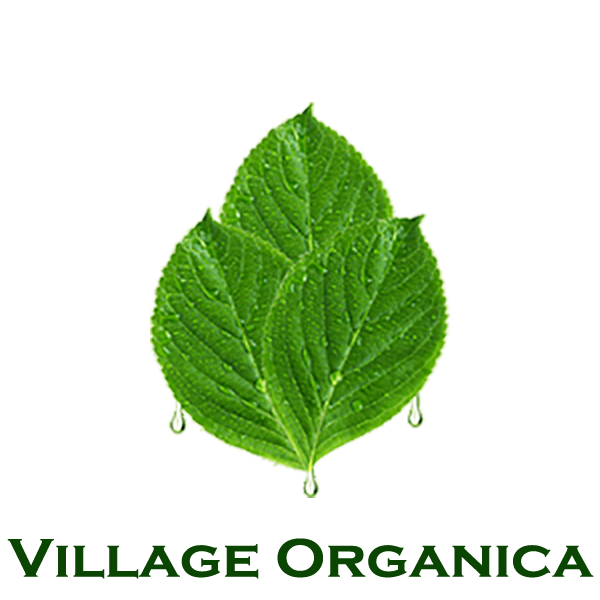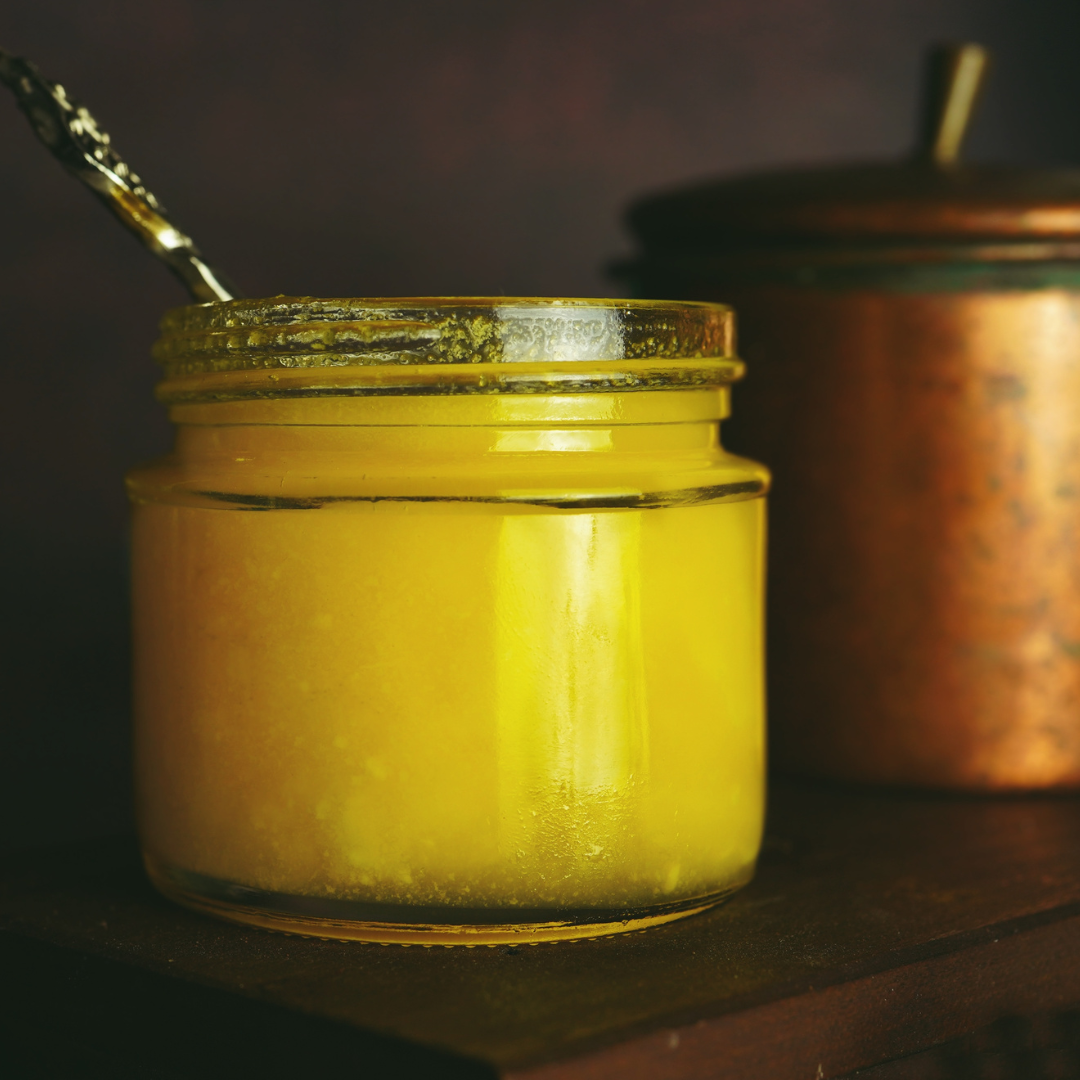Know your Ghee !
“Guide For Any Health-Conscious Consumer Who Buys Ghee For Their Family’s Health”.
To understand basic knowledge lets start with the initial source of ghee so that we get more clarity Ayurveda Sushrut Samhita can be taken as the first source to identify ghrit ( Which is considered equivalent to ghee).
Ayurveda talks about more than 12 categories of ghee divided into 3 versions. Ghrit which is used in day 2 day at every home, Panchgavy ghrit and murcchana sanskara ghrit ( Made with herbs ). As per Samhita best ghrit for our body is made from milk which comes from cow which is mentally & physically happy also only two udder milk is taken. A cow must never be tied and daily grazing must be part of their activity. And how grhit/ghee is made it’s by boiling Vedic hump cow milk for 6 hours in slow temperature and then putting curd culture in whole milk keeping it overnight and then hand churning this curd in Brahm muhrat to get white butter( food of lord Krishna ) and heating it in brass, cast iron or mud pot depending on convenience and usage. There is no mentioning of ghee made from cream that women stores at home from boiled milk and converting it to ghee at least in any authentic scripture. This is the first clear definition of ghrit/ghee and curd churning wooden tool is called mathni or bilona which ladies use to churn anticlockwise-clockwise with help of rope hence bilona is not identified as any process of ghee it’s just a tool to churn butter from ghee but now catches is you can use the same bilona to churn butter from cream and another important part related to bilona it is not easy to make hand made ghee nowadays as it takes 45 minutes approx for one person to get butter for 1liter ghee, so today most of this handmade bilona are replaced by curd percolator, machine bilona or even Vedic bilona which work on the same two-way principle and speed a lady can churn it.
Apart from Ayurveda & there are few more ways of ghee manufacturing process but here we will talk about which are not considered healthy for the human body. ie cream ghee.
One is separating raw cream from milk and ripening of cream with buttermilk and then this cream is left for overnight fermentation next morning this cream is churned via bilona and butter is extracted and converted ghee. This is the most common ghee sold in the market as bilona ghee but consumers don’t know that this is raw cream bilona not curd bilona from whole milk. Apart from this raw cream to sweet butter process (used in commercial dairy & big brand) and cream from boil milk collected and stored is a very common process in every household. But all these 3 ghee don’t have full nutrition of milk as milk is either sold separately, converted in other dairy product and in-home as direct consumption a few years back, when there was research on ghee side effect on the human body that study, was done on these cream ghee, not curd ghee mentioned in Ayurveda which is made from full milk utilization and recent medical papers done on ghrit,panchgavya ghrit have shown very good results on the human body. Sad part 90% Urban and 70% rural population now consumer this cream version ghee which has a history of not more than 200yrs its also said that this process is copied from the European butter process. Although another lost knowledge is there was a process of making healthy cream ghee will write in a future article on types of ghee and their health benefits but currently it is only practiced by limited people still to find any big commercial ghee seller who knows how to make right process cream ghee which doesn’t harm our body.
Kindly note curd bilona ghee manufacturing is twice costly to cream bilona ghee and cream bilona ghee doesn’t give you any health benefits its just a ghee for daily consuming not worth paying the premium.
Let’s share some terms used by the brand to create confusion between cream bilona ghee & curd bilona ghee & how to differentiate cream bilona ghee and curd bilona ghee.
GHEE AROMA
Ghee aroma is the only best way to identify what you have received all cream ghee, curd ghee from a branded company, . Curd bilona ghee aroma is different to cream bilona when u open cream bilona ghee it will smell like typical ghee that you make at home or big brand 20%-30% more or less smell but when you open curd bilona ghee it has a very sweet and soothing smell much adaptive to your sense.
TASTE
Modern cream ghee and cream bilona ghee if you put 1/4th teaspoon portion in your mouth it will give you regular ghee feeling it will melt and finish but when the same portion curd bilona ghee is experimented even after melting it will leave a slight sweetness in your mouth this is another common test you can take on any brand bilona ghee in market. Adding artificial essence will do the job for many brands but again warning that taste will not last long so again you buy a batch after few weeks the taste disappears you are again the loop of consumer tricking.
2-3 MONTH STANDING TEST
Pure curd bilona ghee aroma & taste decline gradually but will not lose sweetness only it will become mild but if your ghee is adulterated with cream ghee or mix ghee there is also a possibility that initially, it might have a sweet aroma and taste but gradually it will turn into cream ghee smell and taste.
TYPE OF MIXING AND ADULTERATION IN BILONA GHEE
- We have explained what is the right process to make curd bilona ghee now let me show what type of ghee is available in the market.
- Cream ghee sold as bilona ghee.
- Cream ripen ghee sold as bilona ghee.
- Buffalo ghee made from buffalo milk with mild turmeric and sold as bilona ghee.
- 50% Cow Milk: 50% Buffalo milk sold as bilona ghee.
- The mixture of cream ghee & curd ghee sold as bilona ghee.
- Additional cream added in milk and made high fat curd and sold as bilona ghee.
- Jersey cow /Holstein cow ghee sold as bilona ghee.
- Milk from jersey cow, buffalo, and desi cow mixed to make cheaper ghee.
So why people use them to make ghee only reason is Buffalo milk has approx twice the fat ( Curd bilona from Buffalo can be made in 15 liters compared to 30 liter Desi cow milk ) from desi cow milk and jersey cow milk is very cheap easily available in the bulk price of 20-25 and there fat content is similar to desi cow milk. So whenever you are trying to buy ghee from any source in low price range rest assured you are buying ghee which I mentioned above it has no health benefits.
By --Tavasth Ayurveda

